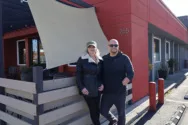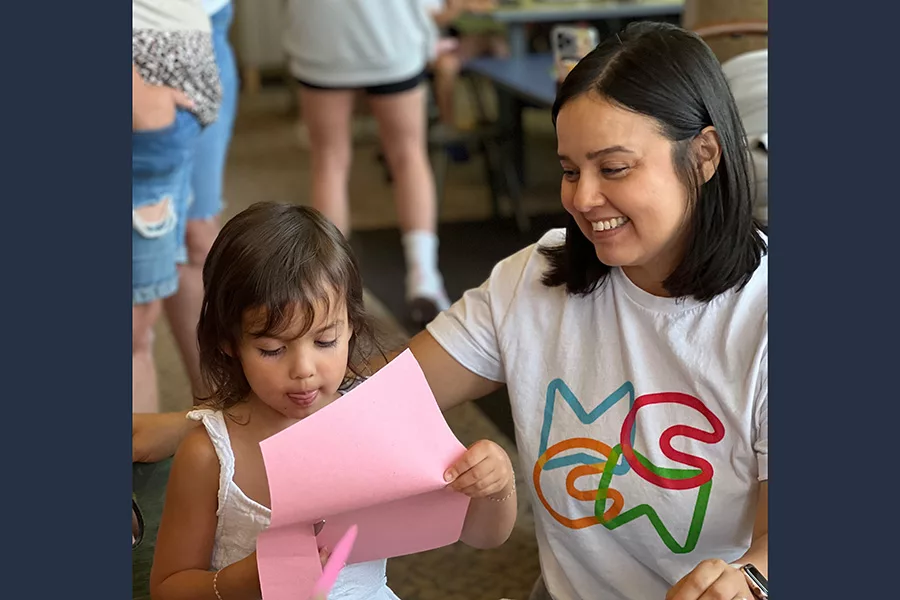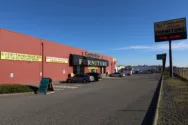
Home » Proponents say future children’s museum could be regional attraction
Museum in the making
Proponents say future children’s museum could be regional attraction

A group working to bring a children’s museum to the Tri-Cities has already made significant progress in the two years since it was formed. The Mid-Columbia Children’s Museum is one of this year’s top legislative priorities.
Courtesy Mid-Columbia Children’s MuseumFebruary 13, 2025
A Tri-Cities nonprofit is working to bring a children’s museum to the area, and its project is gaining traction.
Just a little over two years after a group of parents first met up, the Mid-Columbia Children’s Museum is now one of the Tri-Cities’ top legislative priorities – and destined to become a regional draw.
The nonprofit has gotten enough support from the community to fund a feasibility and planning study, expected to wrap up in the next couple of months, and has identified three potential sites for the future children’s museum.
The group hopes to select a site by the end of this year and secure funding for a design.
Missing museum
Mid-Columbia Children’s Museum’s efforts began in late 2022, when Beth Crocker, now the organization’s board vice president, posted on Facebook about the region’s lack of a children’s museum.
She intended to meet up at a coffee shop with some interested parents, but instead, over 200 people wanted to join in on the conversation.
After an initial meeting, a 15-person volunteer task force was created. The momentum eventually led to the creation of the Mid-Columbia Children’s Museum as a 501(c)(3) nonprofit entity, social media accounts and a website.
“I think we all started this with the frustration of, like, ‘It’s cold, we want somewhere to take our kids. Why don’t we have a children’s museum?’” said Chelsea Blair, MCCM’s board president. But that changed when they realized how it would benefit the community.
The group frequently attends community events, and has hosted its own fundraiser, the Monster Mash 5K run and 1K Creature Crawl.
The group is still in the process of fundraising and is hoping to get 50 local business sponsors, who will be featured as the “Founding 50” on the wall of the future museum.
So far, the children’s museum has support from 25 businesses, which fully covered the cost of the feasibility study launched in 2024.
“Very early on in the process, we decided we wanted to fundraise for a formal market feasibility study so that we could determine the right size of the facility and what the facility should entail from experts in the field,” Crocker said.
The group hired two different firms for the study. M. Goodwin Museum Planning, or MGMP, is tasked with creating an operational budget, staffing models, potential visitation models, size and a spatial drawing of what rooms the museum could have.
The other firm, FRAME Integrative Design Strategies, is more about envisioning the museum. Founder Alissa Rupp partners with the Pacific Northwest Children’s Museum Collaborative and has experience both building museums and working as the executive director in a museum.
“She likes to say that a good children’s museum can’t be plucked up and stuck in another location because it just wouldn’t make any sense,” Blair said. “A children’s museum should be super reflective of the industry, of the culture of that region, and really reflect who the people are and what they do.”
The Mid-Columbia Children’s Museum would be representative of the Tri-Cities community, taking inspiration from some of the things that make the region unique, including energy and rivers.

The Mid-Columbia Children’s Museum would allow kids to learn about STEAM, the Tri-Cities community and careers in a hands-on environment. Already, the children’s museum works to engage kids at community events through miniature exhibits.
| Courtesy Mid-Columbia Children’s MuseumVision
It’s unusual for a community the Tri-Cities’ size to be missing a children’s museum, as Blair found out at a conference session focused on emerging children’s museums.
“We were probably the only museum with a population over 50,000,” she said. “… When we told them our community is 300,000, they looked at us like, ‘Well, is this your second children’s museum?’”
Blair said that there’s often confusion about what a children’s museum is. In short? It’s “an immersive, hands-on STEAM experience,” she said. STEAM stands for science, technology, engineering, arts and math.
When the museum shows up to community events, it brings that immersion: a number of miniature exhibits, like a wind tunnel, a water table with Legos and a Rigamajig building set, to engage the community.
The museum would be around 20,000 to 30,000 square feet in size and would support children through elementary school, maybe up to middle school.
The children’s museum aims to be “a hub for early education,” Blair said, and it would also play a role in workforce development, with kids discovering what their passion is or learning what it means to be an engineer.
Having that knowledge in a children’s museum means “it’s not just a learning atmosphere for kids, but it’s a learning atmosphere for the community, for parents and families to be able to explore together,” Crocker said.
It’s meant to be a space where children lead, and parents or adults are just assistants in that world, Blair said.
A destination spot
The plan is that the museum would be exciting enough to be worth coming to. “Our biggest tourism here in the Tri-Cities is actually youth spots,” Blair said.
Families coming in for tournaments might leave their other kids at home because there isn’t something to do, but a children’s museum could change that. Families could bring their other kids to the museum and plan to spend an extra night.
“We really see it as an anchor for economic development and for bringing people in and having them enjoy the Tri-Cities as much as we all do,” Blair said.
While Walla Walla and Pendleton sport small children’s museums, the closest one with a similar vision is the Mobius Discovery Center in Spokane, she said.
Most children’s museums are also membership-based, Crocker said, which is more cost effective for local families. For lower-income families, there might be a waiver or reduced membership price, she said.
The vision is for the museum to be accessible to all families, Crocker said. The Mid-Columbia Children’s Museum has focused on free community events, and Blair said that they’ve been intentional about avoiding hidden costs for families.
Potential sites
The group is currently looking into three potential sites around the Tri-Cities.
One is by Columbia Park West in Richland, near the Reach Museum; another is at Bradley Landing in Richland along the waterfront; and the third is in the Road 100 area of Pasco, near the future aquatic center.
Crocker said they frequently meet with the cities to talk about the sites. “Our main goal for this year is to be able to call some place home,” she said.
Having a site pinned down opens up lots of new funding opportunities, Blair said.
The nonprofit’s next steps include getting funding from the state Legislature for pre-concept and schematic design. They submitted a request for $1.3 million, and the museum was selected as one of the Tri-Cities Legislative Council’s top five legislative priorities this year.
“There’s a realistic pathway here,” Crocker said. “We have potential sites, we have potential funding and support of our Legislature for that funding to put a vision to this, and … there have been projects that have been successful here before, and there’s various buckets that can help us get the money and funding that we need to complete this.”
Related Articles
Related Products




